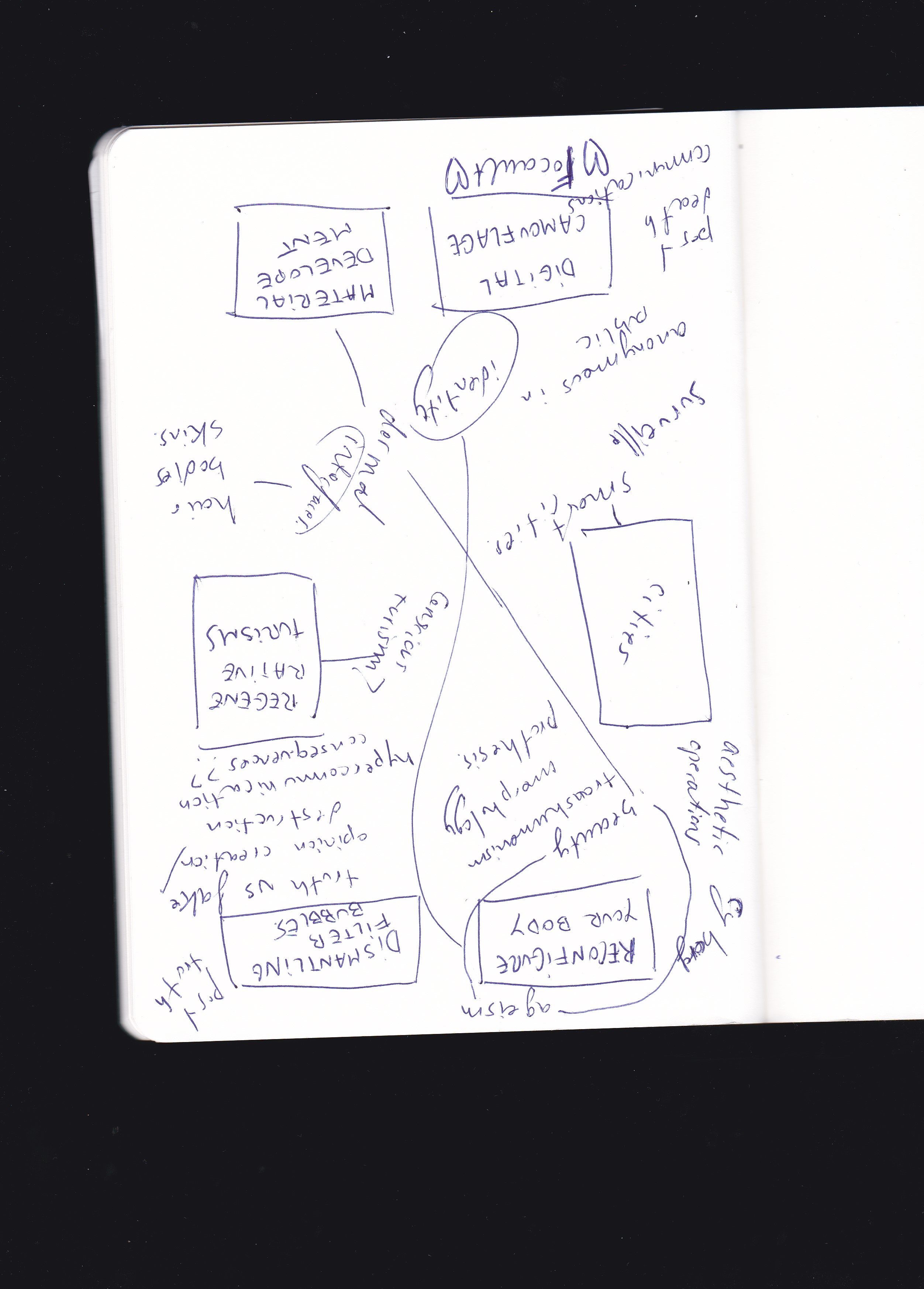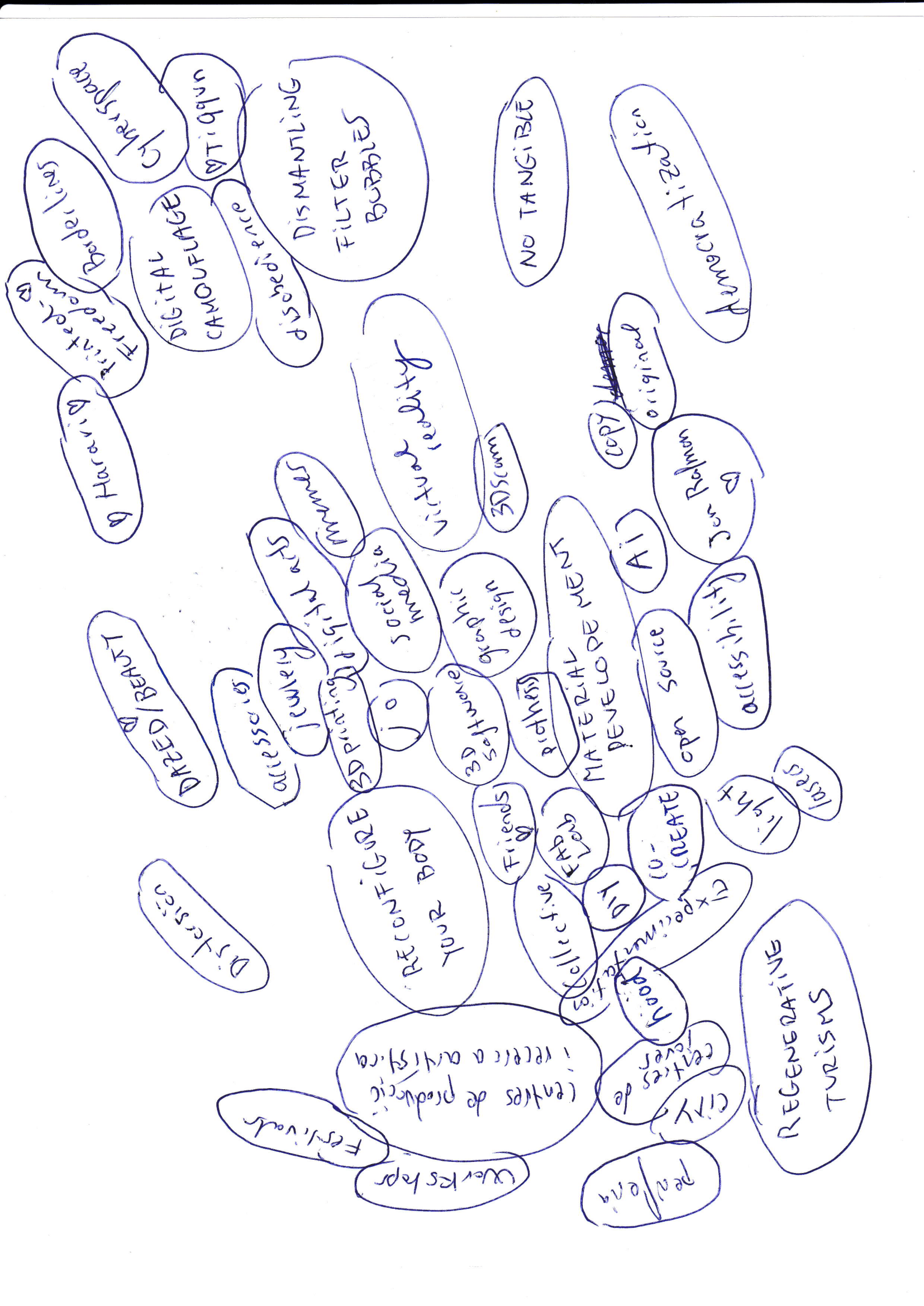
Go Back Term1


Be a trend before a trend
In designing for emergent futures, an Atlas of Weak Signals serves as a visible methodology and structure to situate students, designers and a wide range of professionals from different fields, enabling them to start identifying potential intervention opportunities. It offers immediate keywords for research and experimentation and provides a starter design space to gain confidence and direction on where to begin, allowing for students and faculty to find design and intervention contexts and opportunities.
The goal of this first Atlas of Weak Signals week is to give the students a general overview of the signals and toolkit that constitute the ongoing Atlas, a showcase of the research projects developed by former students and research faculty, and finally, a glimpse into a specific context which offers a hyper-local and situated view of some of the possible vectors that the Atlas presents.
What are weak signals?A weak signal is an indicator used to identify future changes with little or no current impact. By drawing up future scenarios and exploring the boundaries between conventional society and the future of technologies, individuals and organizations can move and position themselves within the complex panorama of the present, thus proactively combating future challenges through opportunities for design interventions.
The first place that we are going to have to look into the defining issue of our time.
We learned the methodology, and we tested the method again in smaller groups. I was not familiar with many terminologies, so it helped me discover and subsequently comprehend new concepts and 'issues that I hadn’t taken into account or wasn’t aware of previously.
How to play?Keywords:
What is a Design Space?
A physical or digital collection of experiments, reference objects, projects, products or materials visualised in a 2d-form in a meaningful way. It can integrate prototypes and projects developed previously, as well as other forms of information.
A navigational tool in the design practice to ground reflection. Visual databases to collect references, projects, materials, prototypes, etc
AoWS as a tool for designing for emergent futures in order to design for emergent futures it is fundamental to sit with oneself.
We can do this through creating one’s Design Space:
My Personal AoWS
BRIEF: "Craft your own custom AWos board and propose two innovative suggestions.
 https://www.elisava.net/research-publicaciones/elisava-insights/
https://www.elisava.net/research-publicaciones/elisava-insights/
My additions
BRIEF : Map your weak signals through a multiscalar perspective to find resources, infrastructure, reference projects and possible context for intervention using the following categories to help you structure the information. Weak signals /Concepts / State of the Art / Reference Projects and People / Infrastructure / Extended Workspace / Materials/ Resources /Technologies and Methodologies / Possible Contexts for interventions.

 https://miro.com/app/board/uXjVNap_doU=/?share_link_id=445489512015
Attached link to the board on creating my design space.
https://miro.com/app/board/uXjVNap_doU=/?share_link_id=445489512015
Attached link to the board on creating my design space.
BRIEF: a reflection regarding their Atlas of weak signal design space.This reflection should include an introspective view concerning the benefits (or not) of the tool provided.
During my university career, I’ve already done a similar exercise, one that involves getting to know oneself, understanding what obsesses you, and why, etc., etc. However, I’ve always found it difficult to choose, as there are numerous topics I’m interested in exploring. The card game seems to me like a good method to create agora spaces. We can generate countless future scenarios in which we can address the use of weak signals. Decontextualizing the present and creating a sort of atlas in which we can map various areas of opportunity and discover weak signals to intervene in different areas that will impact the future. Landing your own weak signals on this large design space map, which is visually accessible, facilitates the understanding of the different worlds one creates, similar to a moodboard. This allows us to connect and find common ground with others.
A First Person Perspective (1PP) approach to futures scouting through making.
novel design education methodologies
actively modifying the present through the power of making with others.
responsibility, accountability, transparency, empathy and positionality Re - orienting design precessess
